|
The Jewish New Year - Rosh HaShana - is coming up in September 2023!
Individual Rosh HaShana Cards with Apples!Apple greeting cards - without text!The Apple Card without text can be given in any context !
Also makes a lovely little art print that can be framed.
0 Comments
Hello friends!
I have created a new beautiful series using my elements you know from my Hamsa Hand artworks and it's truly a colorful 'Ensemble' of doves, fish & eyes.  WHAT IS BIRKAT HABAYIT? Birkat HaBayit (Hebrew: ברכת הבית, literally meaning blessing of the home) is a prayer that can often be found inscribed on wall plaques as well as on Hamsa Hand amulets. The blessings origins is debated however it's become very common place in many Jewish homes as well as non-jewish homes in Israel and around the world. WHERE IS THE BLESSING FOR THE HOME PLACED? The Hamsa's or plaques with the blessings are usually featured at the entrance of Jewish homes or next to windows, yet it's also found on key-chains holding the keys to the home. Birkat HaBayit plaques or Hamsa's are often adorned in creative ways and given as housewarming gifts. There are different versions of the prayer and the text is commonly written in either Hebrew or in English and increasingly in other languages as well!.
BIRKAT HA BAYIT - BLESSING FOR THE HOME ENGLISH: Let no sadness come through this gate. Let no trouble come to this dwelling. Let no fear come through this door. Let no conflict be in this place. Let this home be filled with the blessing of joy and peace. The Hamsa Hand world is fascinating :) You can read more about the symbols i use in my art on on my website blog such as articles about the Hamsa Hand, The Eye, The Fish, The Dove, The Eagle, The Double-Headed Eagle, The Tree of Life, The Chai, The Pomegranate, The Hebrew Letters and more! In my artworks i am very much inspired by the Hamsa Hand symbol - and so, if you've reached my website and you're wondering what a Hamsa Hand is, then i've gathered some of the most common questions that i'm asked, in this blog post to give a quick and easy overview! If you'd like to read more about the origins and history of the Hamsa Hand symbol you can do so in my Hamsa Hand article here on my blog, where i've also written about the symbolic elements that are often seen within the Hamsa Hand! 1. WHAT IS A HAMSA HAND? The Hamsa Hand is a symbol in the shape of an open hand with five fingers. The Hamsa Hand shows the palm of the hand toward the viewer, and it is thought to be an amulet for good luck & protection from negative forces, such as the evil eye. The Hamsa Hand amulet is worn as jewelry, hung on walls in the home, in businesses, on front doors and is often given as a gift! 2. WHAT DOES THE WORD 'HAMSA' MEAN? 'Hamsa' comes from Arabic and means 'five' - it represents the 5 fingers of the hand. In Hebrew the word for 'five' is Hamesh, however the symbol is most commonly referred to using the Arabic term, yet kan also be spelled in different ways i.e. Khamsa. 3. WHAT DOES THE HAMSA HAND REPRESENT? The Hamsa Hand has many different cultural variations, but overall it's a positive symbol that represents protection from negative energies, promotes health, happiness, good luck, abundance, fruitfulness and good fortune. There is usually an eye in the palm as this eye is thought to protect against the evil eye (in hebrew it's called 'Ayin HaRa'). 4. DOES THE NUMBER 5 REPRESENT ANYTHING IN THE HAMSA? The five fingers have been connected in various ways in different cultures and religions. In Islam the Hamsa Hand represents the five pillars of Islam. In Judaism the Hamsa Hand represents the five books of Moses. It's also associated with the five fingers that are connected to the five mudras, the five Buddhist teachings & the five human senses. 5. WHAT ARE THE DIFFERENT NAMES OF THE HAMSA HAND SYMBOL? Because of the Hamsa's different meanings and interpretations in different religions and cultures it is also called The Hand of Fatima (Islam), The Hand of Miriam (Judaism) & The Hand of Mary (Christianity). It is also sometimes known as 'The Healing Hand'. 6. DOES IT MATTER IF THE HAMSA HAND FACES UP OR DOWN? As you've probably noticed, sometimes the Hamsa Hand is pointing the palm upwards and sometimes it's facing downwards. Since it's not an exact science it's of course left to interpretations and different assigned meanings, but in general there is no difference and the symbol can be used in both ways! 7. WHERE DOES THE HAMSA HAND COME FROM? The Hamsa Hand can trace it's origins back to ancient times, to Egypt, various mythologies, religions and regions. The Hamsa Hand as we know it today is most commonly known in it's shape and form as a symbol originating in Mesopotamia (modern day Iraq) and North Africa & The Middle East. You can read more about it's origins and entrance in to the Jewish culture in my article about the Hamsa Hand. 8. WHY DO I SEE THE HAMSA HAND IN MANY YOGA STUDIOS? The Hamsa Hand symbol has been increasingly adopted in the Western World where it's positive qualities and symbolisms of protection from negativity and evil forces resonates well with the modern day yoga practitioners. The Hamsa hand in Buddhism and Hinduism represents the chakras, the five senses and their different mudras- special hand gestures. These mudras are believed to re-direct energy flow throughout the body and the Hamsa Hand is therefore a natural fit in the Yoga practitioners world. 9. DO YOU NEED TO BE RELIGIOUS TO USE OR WEAR A HAMSA HAND? Not at all! The Hamsa Hand speaks to many people who enjoy it either for it's positive qualities as a good luck charm or as part of their own culture or because they like the different meanings and artistic expressions of the Hamsa Hand. 10. WHY DO YOU THINK THAT THE HAMSA HAND HAS BECOME POPULAR IN THE WESTERN WORLD? In the Western World the Hamsa Hands presence is increasingly felt as it can be worn or shown off in the home, also by non-religious people. Religious, spiritual or not, the Hamsa Hand seems to satisfy a human need to protect one-self and loved-ones from bad energies and jealousy and it speaks to people's inner wishes to connect with the positive aspects such as good luck, prosperity, health and protection. It has become a popular symbol within fashion and popular culture too because many celebrities and people who - with the rise of social media- are very much in the eye of the public. This may increase the need to connect with the protective aspects of the Hamsa Hand symbol. Meghan Markle, the duchess of Sussex, has even been spotted wearing Hamsa Hand jewelry. You can read more about the symbols i use in my art on on my website blog such as articles about the Hamsa Hand, The Eye, The Fish, The Dove, The Eagle, The Double-Headed Eagle, The Tree of Life, The Chai, The Pomegranate, The Hebrew Letters and more! Feel free to write to me through my website if you have any questions you're curious about.
These Seven Species are considered special and holy and there are unique blessings for each species! Just as the vine and the olive, the fig is regarded as one of the staples of life and it is considered to be symbol of abundance and prosperity. WHEN ARE THE SEVEN SPECIES EATEN? The species are most traditionally consumed on Tu Bishvat - the Jewish "New Year for Trees" which is usually taking place on the 15th of the Hebrew month of Shevat that often takes place in January or February. In modern Israel trees are planted in celebration on this day. The species are also eaten on Sukkot, the "Feast of Tabernacles, an agricultural festival that originally was considered a thanksgiving for the fruit harvest, and on Shavuot, the "Festival of Weeks" that is associated with the grain harvest. THE FIG IN THE BIBLE The fig is mentioned in Genesis in the story of Adam and Eve. After eating fruit from the Tree of Knowledge in the Garden of Eden, which they had been commanded not to do by God.... 'the eyes of them both were opened, and they knew that they were naked and they sewed fig-leaves together..' thereby clothing themselves with fig leaves. In most Western art the forbidden fruit is depicted as an apple hanging on an apple tree, however the religious scholars debate that the fruit was rather a fig from a fig tree. In the Michaelangelo painting from the Sixtine Chapel in Rome, the tree is depicted as a fig tree. THE FIG SYMBOL IN MYTHOLOGY & ART In Greek & Roman mythology figs have been associated with Dionysus (Bacchus/god of wine & song) and Priapusin (a satyr) symbolizing sexual desire. The figs connection with sexuality is closely connected to its featuring in creation stories and its symbolism to fertility & fruitfulness. The Romans used the fig-symbol to express a sign of fruitfulness-blessing and as a symbol to ward off curses and to protect from the evil eye by showing a 'mano fico' (fig-hand). Because they associated the fig with female fertility and eroticism they used the gesture against the evil eye. The Hamsa Hand is also an amulet that is believed to wards off negative and evil spirits as well as to protect against the evil eye, you can read more about these on my blog. The Romans believed that the obscenity of the sexually related hand gesture would be a distraction to evil, and that demons would flee or be repelled by the sight of the gesture reflecting sex and reproduction. This hand gesture is however highly offensive today in many cultures. THE FIG - AN HONORABLE PRIZE WITH HEALTH BENEFITS! The early Greeks valued the figs, and used figs (the leafs/foliage and the actual fruits of the fig tree) as an honourable prize to present winners with, of different competitions. The fig was prized and thought of as a rich, delicious food, as well as a medicine. Dioscorides, The Greek herbalist devoted 3 chapters of Book I of the De Materia Medica solely to figs (I. 183–186.) The fig had a good reputation among herbalists in medieval times. Consuming the fig fruit was thought beneficial to the throat and lungs, it removed toxins from the kidney and could counteract poisons and reduce inflammations and much more. THE FIG LEAF CAMPAIGN AND MODESTY IN ART Greek and roman classical statues that depicted heroic nudes and naked bodies continued to be appreciated during the late empire, yet with the rise of Christianity and the influence of the church, the nudes of the classical antiquity began to symbolize a "pagan" past and idolatry, within medieval Europe and the Byzantine Empire. Nudity began to play a lesser role than before. Centuries later during the Renaissance, artists were again captivated by the ideal ancient forms and they began to revive classical values, restoring the nude figure as a symbol of beauty and ideal. The artists began to fill palazzi with frescoes and nude statues. As the Italian catholic church grew stronger, religious forces began to resist the freedoms taken by artists. And the 'fig-leaf campaign' was born. The Vatican began ordering reforms which included censorship of nudity in art. To deal with 'the problem', statues were covered with fig leaves and paintings had leafs or cloths added on the nude parts of the bodies. The great Renaissance artist Michaelangelo's painting in the Sistine Chapel in the Vatican 'The Last Judgement' (1533-41) was not spared and was nude areas were painted over with loincloths, twice in the 1500s, and then again in the 1700s. The last many years much restoration work has been made in an attempt to restore paintings and sculptures, including on the Last Judgement were many loincloths have been removed. You can read more about the symbols i use in my art on on my website blog such as articles about the Hamsa Hand, The Eye, The Fish, The Dove, The Eagle, The Double-Headed Eagle, The Tree of Life, The Chai, The Pomegranate, The Hebrew Letters and more!
Feel free to write to me through my website if you have any questions or elements you're curious about. MY JUDAICA IN THE SPOTLIGHT Today an interview with me was published on a lovely website called Judaica In The Spotlight. Their website helps showcase Jewish artists and Judaica art, and i recommend visiting their website! :) The interview is about my Hamsa Hand artworks and some of my inspiration and judaica / symbolic influences.
Enjoy! :) TAKE ME TO THE INTERVIEW!
The Hebrew letters are fascinating and interesting to learn about because each letter in the Aleph-Bet contain different meanings and symbolisms. Perhaps therefore it is not a coincidence that the Hebrew word for “letter” is "ot" (אוֹת). This word also means “sign” or “symbol” or “cue”! BRIEF INFO ABOUT THE HEBREW SCRIPT Hebrew is an ancient script and it is different from other scriptures in that:
WHAT IS GEMATRIA ? In Hebrew the letters and words all have numerical value, providing a deeper meaning as well as connecting different words, providing even further meanings and inter-connections between them. Even the sequence of the letters can have meanings which makes the deciphering of these codes and different meanings and interpretations an interesting area of exploration or study. From an Etymological perspective, the word Gematria itself is thought to derive from the Greek γεωμετρία geōmetriā, "geometry", which was used as a translation of gēmaṭriyā, though some scholars believe it to derive from Greek γραμματεια grammateia "knowledge of writing". In relation to biblical texts, Gematria has been used by Jewish scholars and Kabbalists who believe that in these hidden 'codes' within the religious texts such as the Torah, the letters and words and even sounds are clues to gaining deeper insight about life and events. It comes also in part from the mathematical idea that numbers and interconnections/ relationships between them help to explain phenomenons in nature and our universe. Within the religious belief, the world was created through God’s “speech,” and therefore each letter represents a different creative force. This is also the assumption behind the use of Gematria - that the different numerical equivalences are not coincidental. THE NUMBER 18 IN JUDAISM - the chai. A well-known example of Hebrew gematria is the word chai ("alive"). The word adds up to the number 18 - and therefore the Chai word is often worn as a jewelry as 18 is considered a lucky number among Jewish people. It is composed of two letters - Chet ( ח) and Yod ( י). In my Hamsa 22 Artwork with the CHET letter, that represents the word 'Chai' meaning 'alive' or 'life' and representing also the number 8 in Gematria, - i've used the Tree of Life from the Kabbalah to illustrate these different hidden meanings of the letter. The Kabbalah is a school of thought in Jewish mysticism. Read more about The Tree of Life from the artwork below. 13 IS A GOOD NUMBER Another example is the number 13 representing among other things, the word AHAVA which means 'LOVE' and 'ECHAD' which means 'One'. Each word both adds up to 13. The Hebrew letter MEM is the 13th letter in the Hebrew aleph bet and represents MAYIM (water) which is crucial for life. The number 13 also symbolizes the Bar Mitzvah age of Jewish boys and it's considered overall a very good and lucky number. If you're interested in viewing or buying art prints from the Hamsa 22 Hebrew Letters series, you can find them in here in my online shop! WHAT DOES EACH HEBREW LETTER MEAN? Many scholars have studied the letters and meanings and there is a vast amount of literature and commentaries to be found with varying levels of complexities! Naturally i am not a biblical scholar or a Jewish kabbalist and my own interests and exploration of the Hebrew letters has been through different books, online materials and videos, as part of my research in creating the Hamsa 22 series! To learn about each Hebrew letter - check out my online exhibition on Instagram. HAMSA 22 ONLINE EXHIBITION OF THE HEBREW LETTERS - NOW SHOWING! Many people seek to understand the individual letters & drawings more, beyond their visual aesthetics. My art (and any art) can of course be enjoyed as it is without the extra dimension or provided meaning, however to those that may seek this further understanding about my the letters and my inspiration for each drawing, i'm currently having a very basic introductory online 'mini-exhibition' in my Instagram stories, of each Hamsa 22-drawing! If you head on over to my Instagram account, you will already discover some of the individual Hebrew letters that i've featured - they are located in their own unique folders on my Instagram account. There, I provide easy and introductory information about the hidden meanings of each Hebrew letter in relation to my own Hamsa 22 artworks. You are also welcome to explore my BLOG as i update my articles or check out an overview of the symbolic elements on my website!
The 72 Names of God are not “names” in the usual sense but rather they are thought to be a kind of metaphysical keys - or powerful spiritual tools to achieving an abundance of blessing, fortune, prosperity, wholeness and happiness. It's believed one need not even know Hebrew, merely scanning the letters visually or thinking about them / meditating on them, helps this connection. In the online Instagram stories exhibition, i explain each 3-letter unit i've used in the corresponding drawing.
You can read more about the symbols on on my website blog or feel free to write to me through my website if you have any questions or elements you're curious about.
But if you've ever pronounced the word Challah (the braided bread prepared for Friday's Sabbath dinner), then that should give you a better idea of how the Chai is pronounced. The Chai is often given as a gift in the form of a necklace, and can be seen alone or in combination or embedded within the Hamsa Hand or Star of David. In my own drawings I have embedded the Chai within my Hamsa Hand artworks from my Hamsa 2013 series and my Hamsa 22 - Hebrew letters series (CHET) letter which also has the Tree of Life from the Kabbalah. SYMBOLIC & NUMERICAL MEANINGS OF THE CHAI The word 'CHAI' is made up of two Hebrew letters, Chet & Yud and it possesses both a symbolic and numerical meaning. Symbolically Chai represents life - and life is traditionally an emphasis in the Jewish religion. Perhaps you've already heard the common Jewish toast 'L'Chaim' (to life)! There is also a common expression ' Am Israel Chai' which means 'the people of Israel live' - a phrase used both in joyous times but also as a kind of prayer or statement emphasizing the survival of the Jewish people despite many historical attempts of annihilation. The Number 18 Numerically the two letters make out the number 18 in what is known as Gematria , which is a mystical jewish tradition of assigning numerical value to the Hebrew letters. The Chet equals 8 and the Yud equals 10 (8+10 = 18). The Chai therefore also represents good luck and it is common to give gifts resembling in some way the number 18 or even double 18 (36) 'Double Chai'.
To read more about the symbols i use in my Hamsa Hand artwork, check out the Symbolic Elements where you can read about The Hamsa Hand, The Eye symbol, The Dove , The Fish, The Eagle, The double headed eagle, The Tree of Life , The Pomegranate Fruit & The Hamsa Hand in a Danish Tv Show - and more!
Check out my website www.maybellbareket.com for more about me & my Hamsa Hand artwork and connect on Instagram
THE HAMSA HAND IN DANISH POPULAR CULTURE! One of the ways you can get a sense of the increased presence and use of the Hamsa is in a new (2017-2018) Danish Tv-series that I have been watching called "Herrens Veje" (literal translation: The ways of the Lord). In English it's called "Ride Upon the Storm" and it stars the great Lars Mikkelsen (you might recognize him from House of Cards where he plays the Russian president Petrov). The series revolves around a Christian pastor and his family - i won't write much about the actual series - but it is great to watch not just for the drama but for all the symbolism and especially the Hamsa hand! GOD MOVES IN MYSTERIOUS WAYS The Hamsa hand is used as an extra narrative element in the series and can also be seen in the intro-clip accompanied by the theme song by Claus Hempler, which is quite beautiful (attached at the end of the post below). The song uses lyrics from a poem by William Cowper (1731–1800) and uses it's first stanza: God moves in a mysterious way, THE STORM & THE POWER OF GOD - PSALM 29 The name of the TV-show is clearly inspired by the poem and it brings also to mind the Psalm of David, Psalm 29 which is a one of the loveliest psalms written, it's a poem in itself. In Judaism the Psalm 29 is usually interpreted to be about the advent of God in a the strength of a storm, where the voice and power of God is expressed through thunder, lightning, and earthquakes. It is a psalm that gives praise to the God of creation who is the omnipotent Lord over all things and is above the storm. In the psalm the name Yahweh (יהוָה) is also found 18 times which in Jewish gematria is the equivalent to the Hebrew word 'Chai' ( חֹי ) meaning 'Life'. In life, no matter how powerful & in control we humans think we are, anyone who has ever witnessed or experienced the powers of nature, our human powers tend to pale in comparison next to the unleashed powers by nature! A storm is therefore also a very humbling experience. At some point we all experience personal storms in life and struggle to get through it or wait for the storms to pass - and sometimes one must surrender control, trust that things will be ok and ride the storm! The last word of the psalm is peace (Shalom). The psalm thus begins with a storm, but ends with peace - God brings his people peace even in the midst of storms. There is hope! I will write more about the חֹי in a future blog post as I also used it in my Hamsa Hand art here & in my blog post about the Tree of Life ! There is an extensive analysis of the Psalm 29 here. IN DANISH IT'S CALLED A HAMSA HÅND The Hamsa Hand appears in a few of the episodes of the first season, but especially in episode 7! It is known as the Hand of God, a symbol of protection and visually it's represented by the pastor's son August who holds up the Hamsa hand - as well as his own hands. (I won't say more about why - you just have to watch the series!) If you want to read more about the Hamsa hand symbol and the other symbolic elements that I use in my HAAMSA art you can check out my blog. MORE SYMBOLIC ELEMENTS IN 'HERRENS VEJE' Two other still photos from the series intro shows grapes, wine, pumpkins and the pomegranate. You can check out more about the pomegranate symbol which i have written about , and also used in my Hamsa Hand artwork! In Judaism it is a symbol for fertility and success - and much more! The bird is also represented in the series - there's a lovebird belonging to one of the characters and the intro shows birds flying high and also some that have sadly fallen to the ground. It can look like sparrows and here it may allude to the Christian theme of the Fallen sparrow: “Are not two sparrows sold for a farthing? and one of them shall not fall on the ground without your Father” (Matt. 10:29) and "Are not five sparrows sold for two pennies? Yet not one of them is forgotten in God's sight" (Luke 12:6). The Sparrow as a Christian symbol thus represents the concern of God for the least among all people and they are always under God's protection. The sparrows are also symbols of pious families (such as is a theme in the Pastor's family heritage) who live (or try to) live humble, lowly lives in obedience of God's will. In the series intro-clip the birds are not doves which are often used in the bible but birds in general are central nevertheless in Christian & Jewish tale. You can read more about symbolism of the dove and the eagle - bird elements i use in my Hamsa hand artwork! NOW ENJOY THE MUSIC! I recommend to end this blog reading by listening to the mentioned song - linked below, and of course to watch the series :) The soundtrack is also quite nice (Look for " Sange fra Herrens Veje " on Spotify). Danish speakers can watch it here for free on DR where it is currently streaming. To view some of my unique Hamsa Hand art prints go to my shop or contact me for more information!
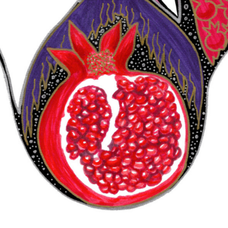 Detail from Hamsa Hand artwork, May-Bell Bareket, A4, Ink on paper Detail from Hamsa Hand artwork, May-Bell Bareket, A4, Ink on paper THE POMEGRANATE The red fruit is a classic symbol which is highlighted even more so as the Jewish new year (Rosh HaShana) approaches. The pomegranate which in Hebrew is called Rimon is considered to be one of seven agricultural species or special products of Israel known as שבעת המינים, Shiv'at HaMinim, the others being wheat, barley, grapes, figs, olives, and dates. There are many references to these foods in the Bible and they are listed in the Torah in Parashat Eikev (Deuteronomy 7:12-11:25) "For the LORD your God is bringing you into a good land, a land with streams and springs and fountains issuing from plain and hill; a land of wheat and barley, of vines, figs, and pomegranates, a land of olive trees and honey; a land where you may eat food without stint, where you will lack nothing; a land whose rocks are iron and from whose hills you can mine copper." In the ancient days, pomegranates were often eaten fresh or turned into juice. The symbol of the pomegranate was used on decorations on the hem of the robe of the high priest as depicted in the photo, and on the Temple pillars, and embossed on coinage. A SIGN OF BLESSING What is it that makes the Pomegranate such a strong symbol and why is it considered a Biblical sign of blessing? Some suggest that it is because the pomegranate is different from fruits that are made up of pulp and seeds as the pomegranate is made up mostly of its seeds and it doesn't have much pulp. Usually, the pulp of the fruit is used by the fruit to "feed" and maintain itself, and it is the seeds of the fruit that are used to grow and bring more fruit into the world. The seeds themselves naturally therefore symbolize the granting of more fruit and being blessed with more fruit. The pomegranate - being mostly seeds- has therefore come to symbolize blessing. THE TORAH SCROLLS With its symbolism as well as its royal crown on the top of the fruit, many Torah scrolls have pomegranates as decorations, and the fruit has also come to symbolize or become associated with the 613 Mitzvot (commandments) of the Bible. The pomegranate, which is originally associated with the Torah, is today an integral part of the Torah scroll throughout Jewish congregations. Originating from the Middle Ages, the two wooden rollers that holds the Torah scroll were decorated with ornaments in various shapes of fruits but very often in the shape of pomegranates. The caps of the Torah rollers are called Rimmonim (the plural form of Rimon which in Hebrew means Pomegranate). The Rimmonim are usually made out of silver and they often reflect the creativity and artistic traditions as well as the size of the pocketbooks of their different communities (Abram, 2009). In a recent find of a 200 year old Torah scroll from Iraq, a microscopic sample of the scroll's ink revealed that it was made out of pomegranate juice concentrate! The examination also revealed that the scroll was likely written in the Kurdish region in northern Iraq. A SYMBOL OF LOVE AND FERTILITY In Judaism the pomegranates are also considered to be symbol of love as well as fertility (much like the fish). Therefore the pomegranates are often mentioned in many biblical texts such as for example the beautiful Song of Songs (Song of Solomon). In The Song of Solomon the lovers create an association or a link to the pomegranate and its juice with romantic encounters (Abram, 2009). “Let us get up early to the vineyards; let us see if the vine flourish, whether the tender grape appear, and the pomegranates bud forth: there will I give thee my loves” (Song 7:12) “Thy lips are like a thread of scarlet, and thy speech is comely: thy temples are like a piece of pomegranate within thy locks” (Song 4:3). The pomegranate’s many seeds, and with its sensuous red color reminding us of the blood of life, and its connection with the land’s productiveness—all suggest this fruit is a symbol of human fertility. I use the fish symbol which symbolizes fertility and success in my Hamsa Hand artwork, as well as other symbolic elements such as the dove , the eye, the eagle , the double-headed eagle and more! If you want to read about the Hamsa Hand symbol itself you can check out my article about it in my blog as well. For Hamsa Hand art prints you can find them in my online shop! POMEGRANATES FOR ROSH HASHANA The Jewish new year is celebrated with a New years dinner also called a seder. Different symbolic foods are part of blessings , such as apples dipped in honey to symbolize a sweet new year. Before eating each symbolic food, it is held and the blessing is recited. Before eating the pomegranate the blessing is therefore said: יְהִי רָצוֹן מִלְּפָנֶיךָ ה' אֱלֹהינוּ וֵאלֵֹהי אֲבוֹתֵינוּ, שֶׁנִּהְיֶה מְלֵאִים מִצְוֹת כָּרִמּוֹן May it be Your will, Lord our God and the God of our fathers, that we be filled with mitzvot like a pomegranate [is filled with seeds]. If you enjoyed this article, check out my other articles in my blog! Below are photos from last years table-setting that i did (2017). The symbolic fish , pomegranates , apples and honey are all represented. Shana Tova! Reference: Abram, M. (2009). The Pomegranate: Sacred, Secular, and Sensuous Symbol of Ancient Israel |
MAY-BELL
|
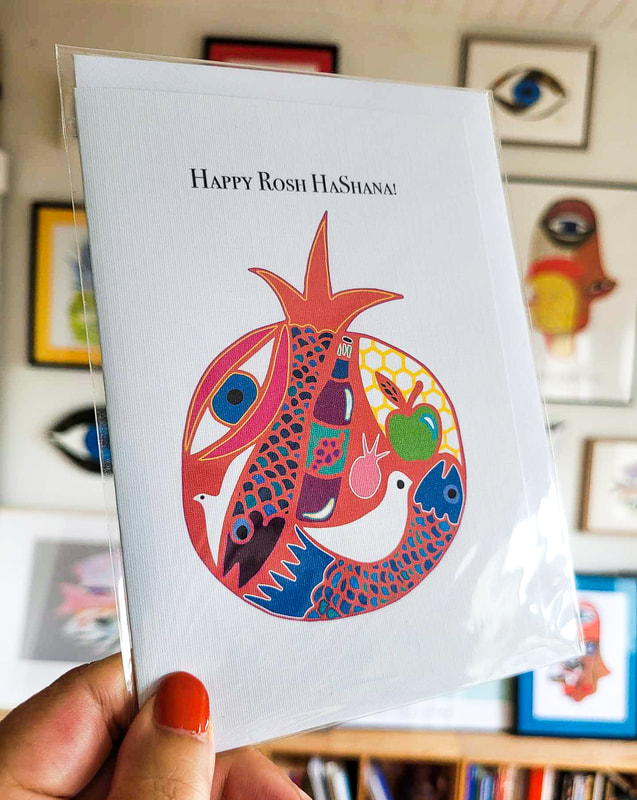

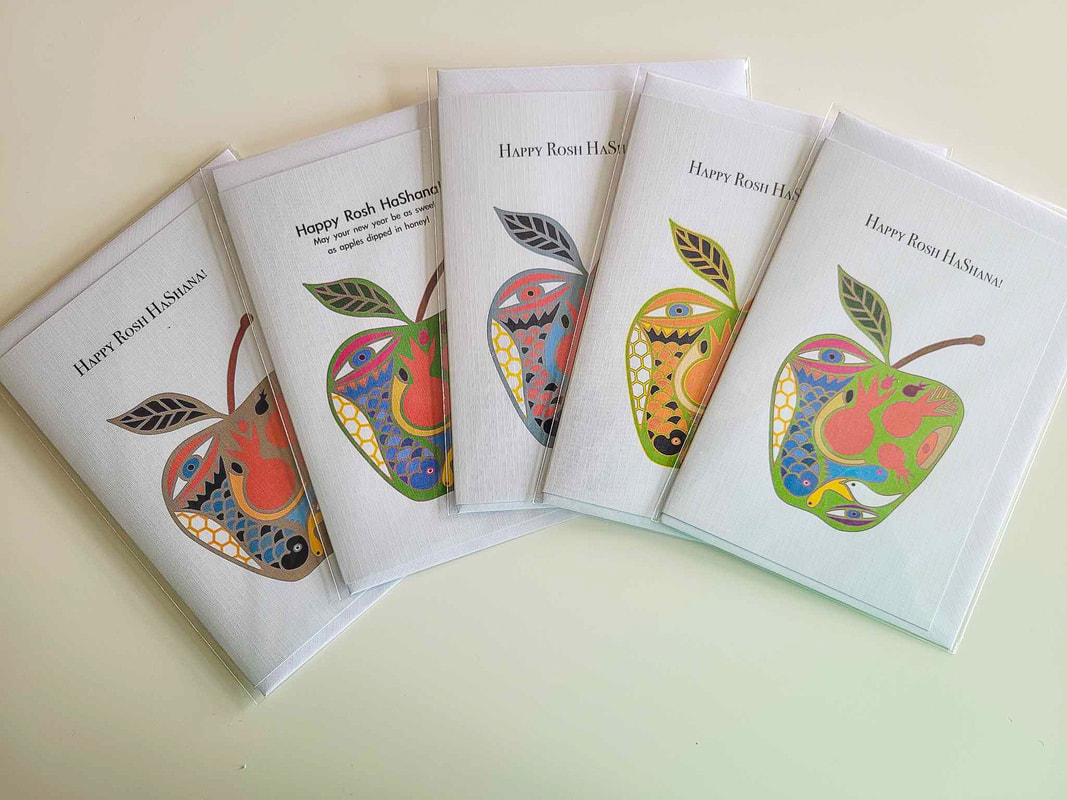
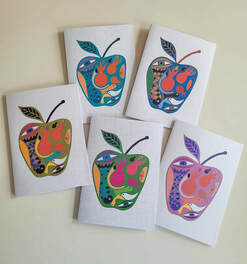
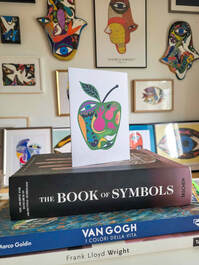
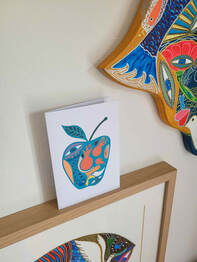
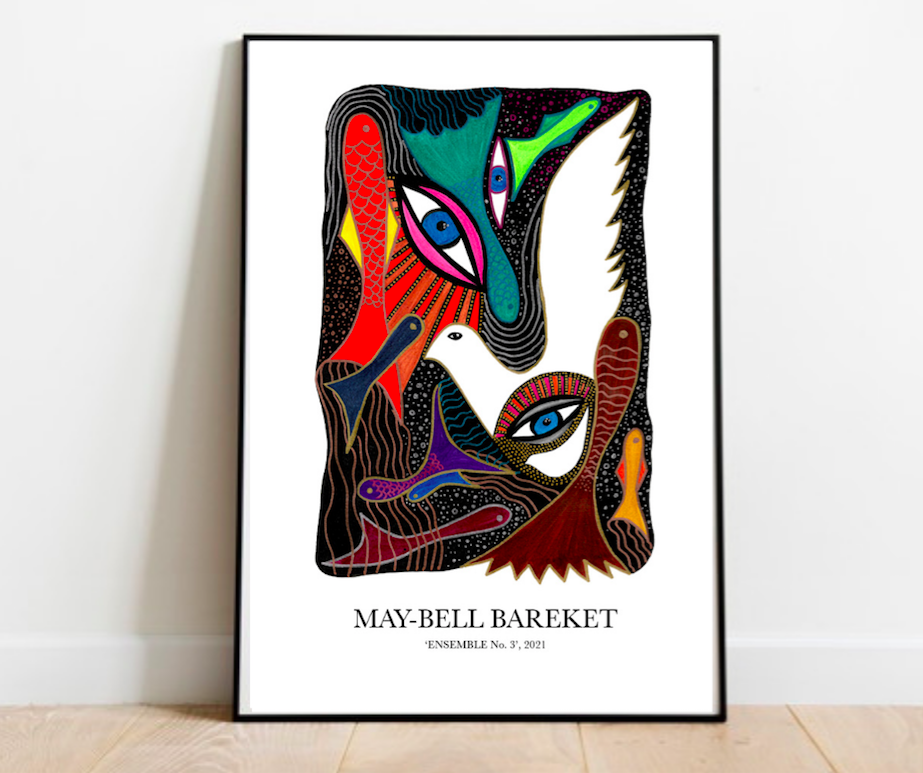
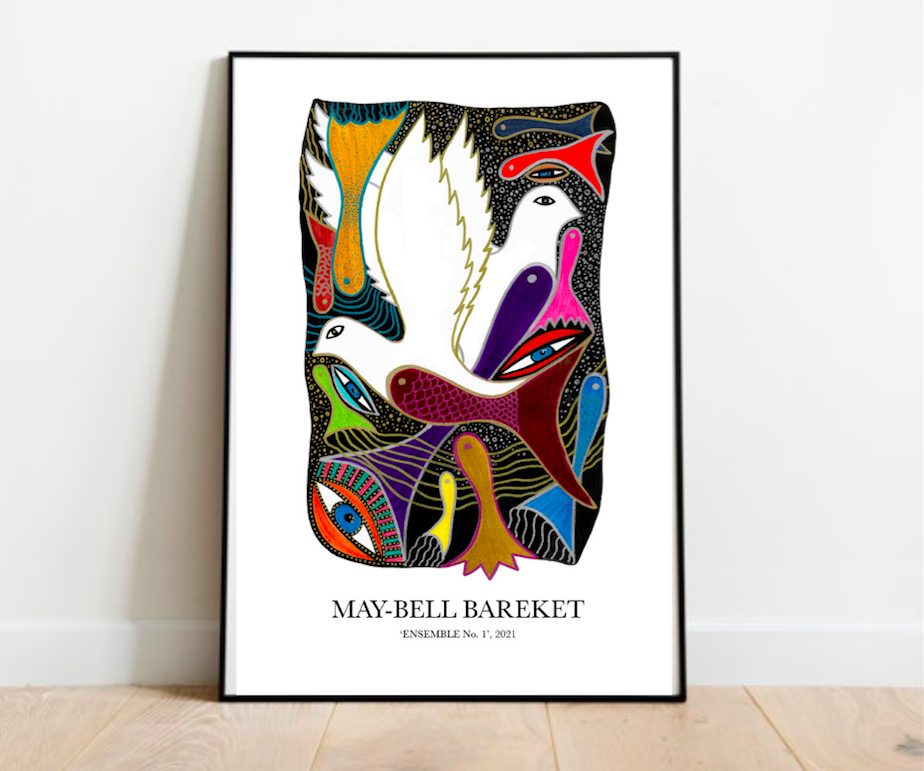

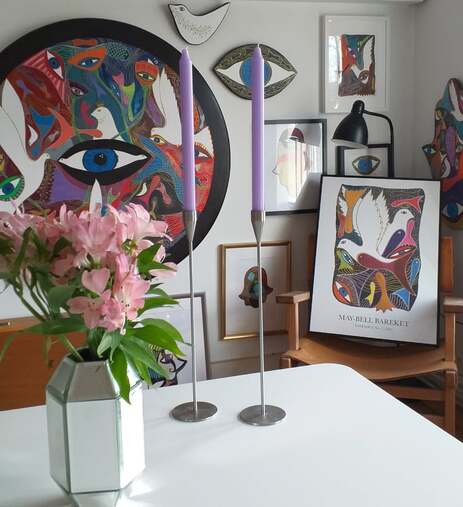
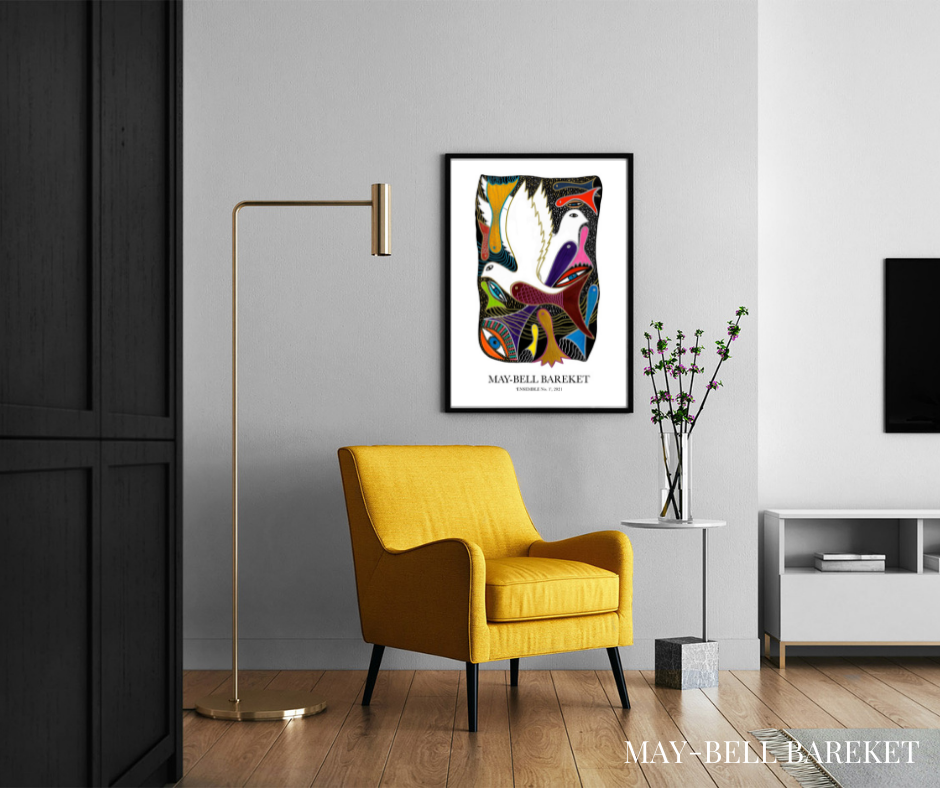

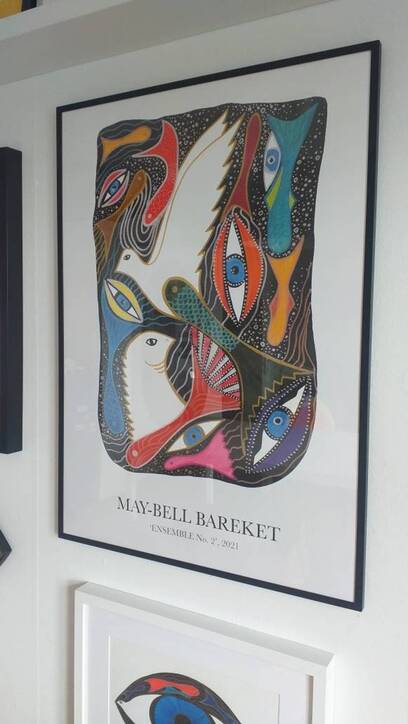
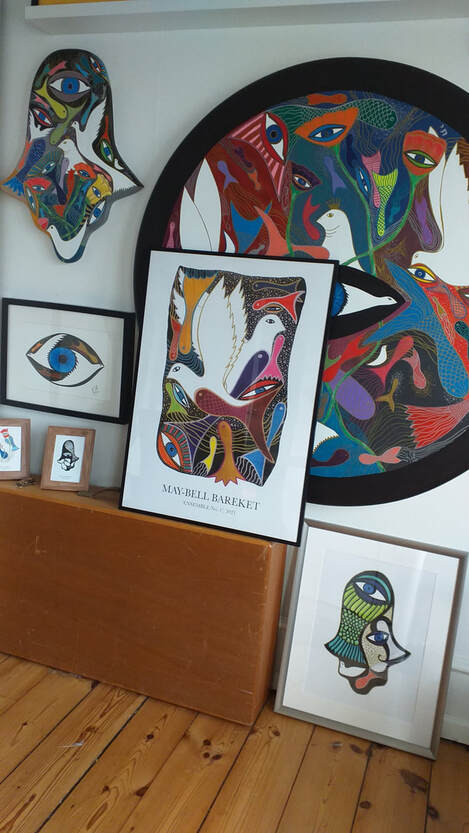
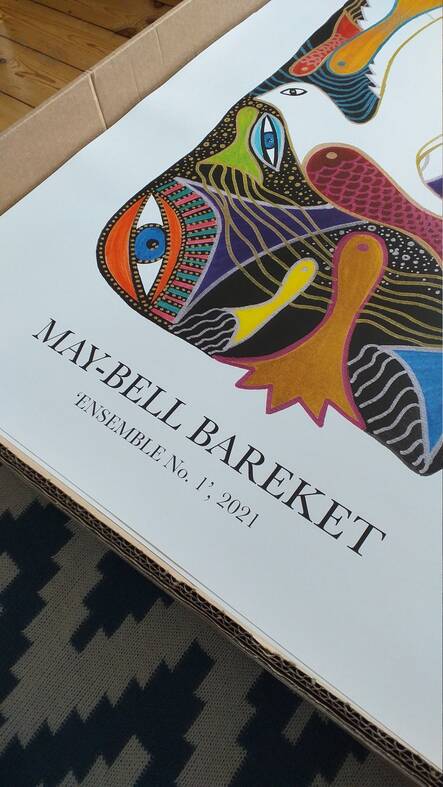
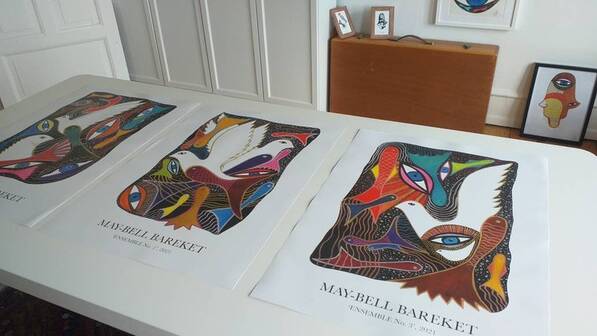


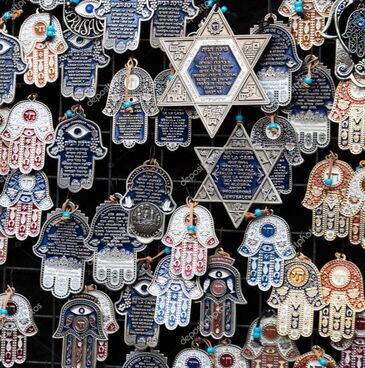
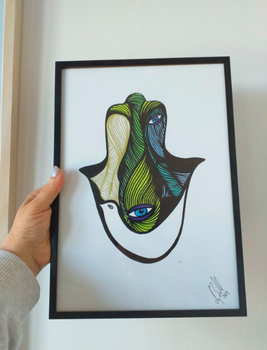
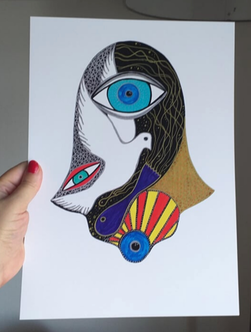
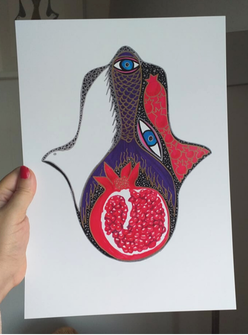
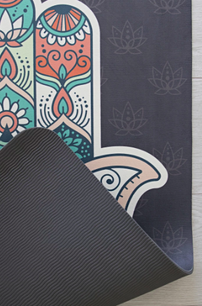
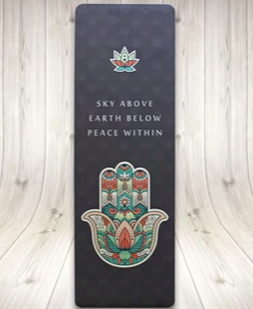
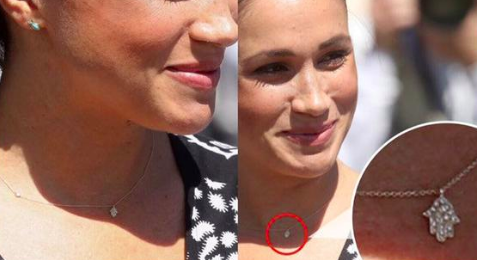
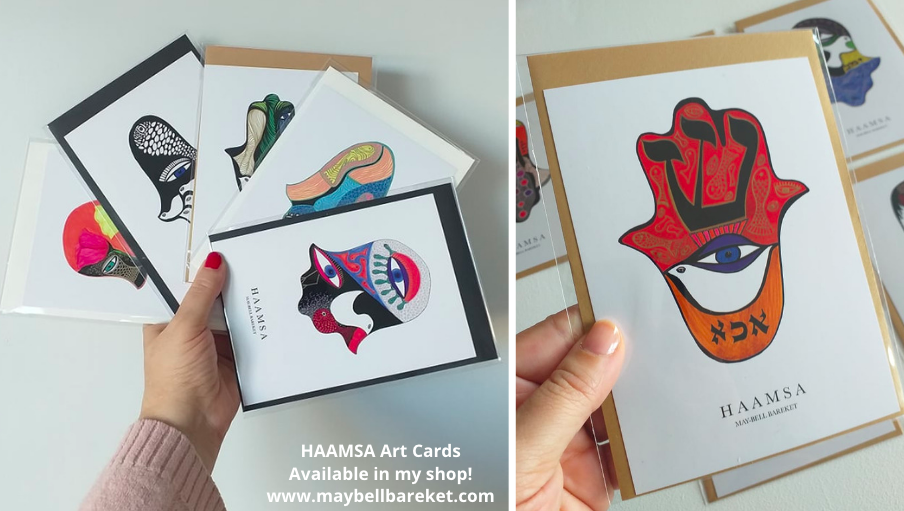
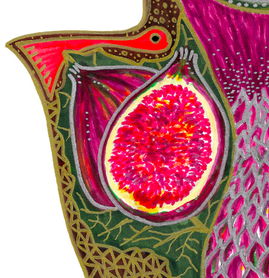
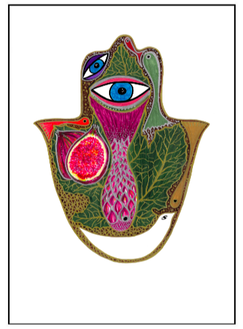
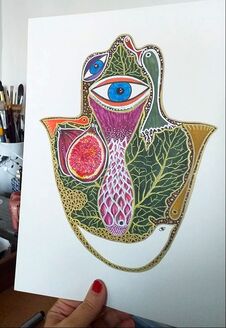
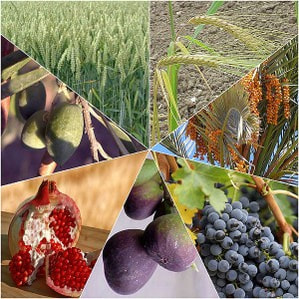
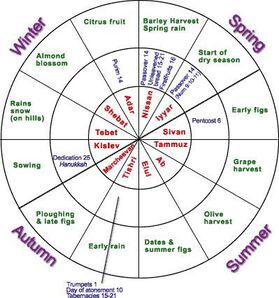
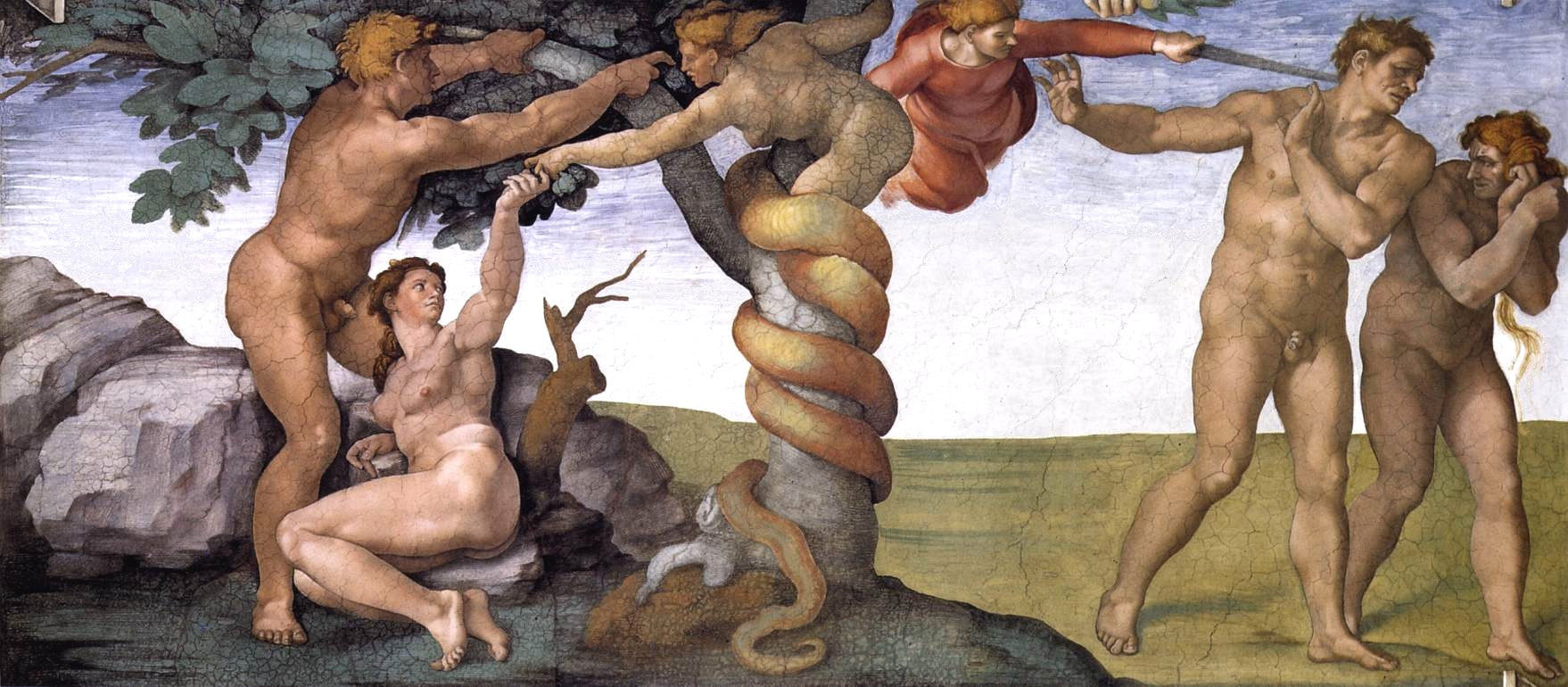
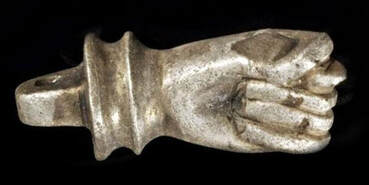
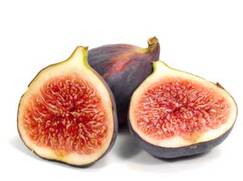

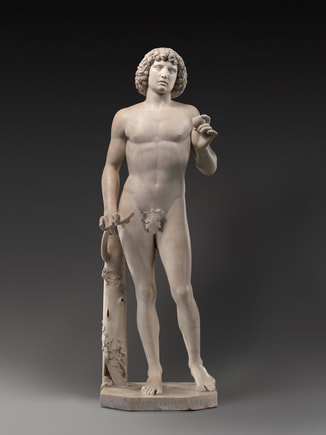
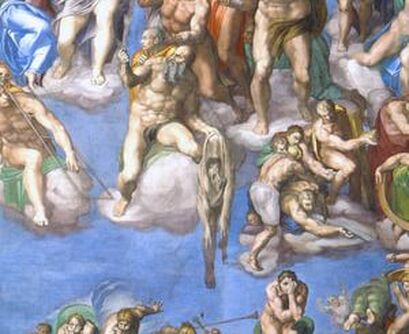

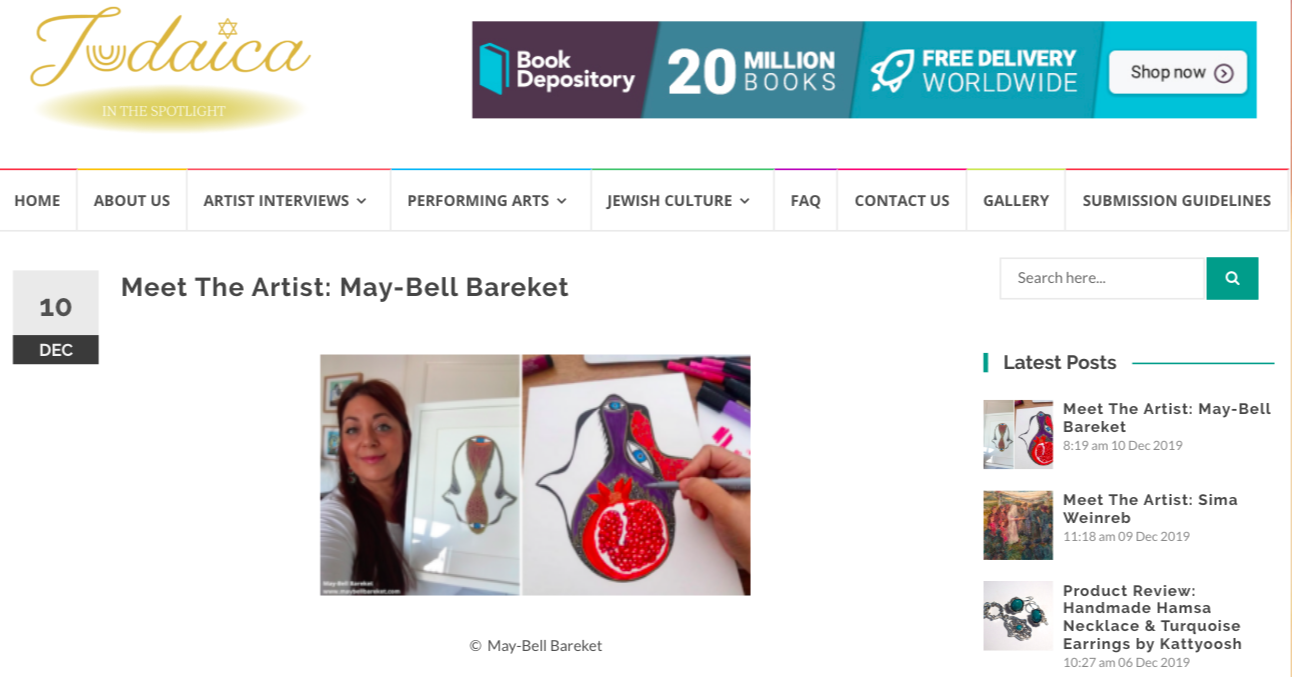
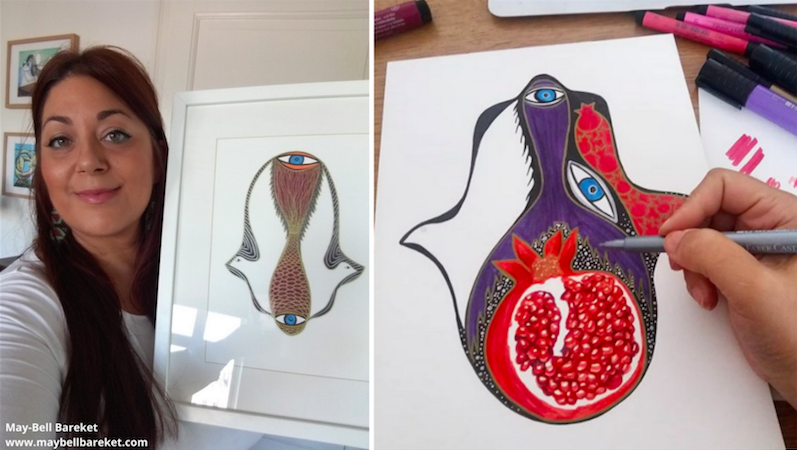
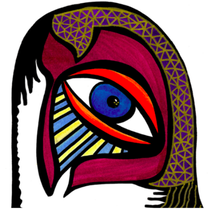
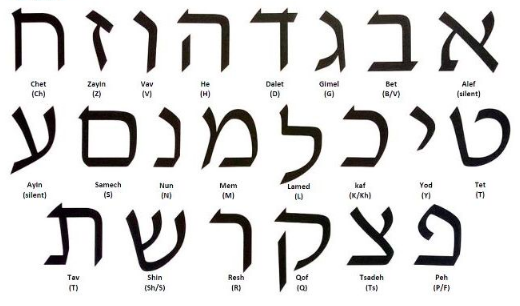
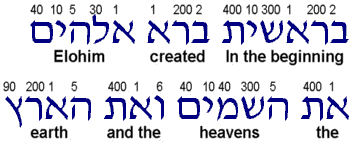
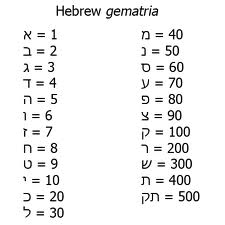
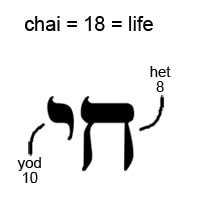
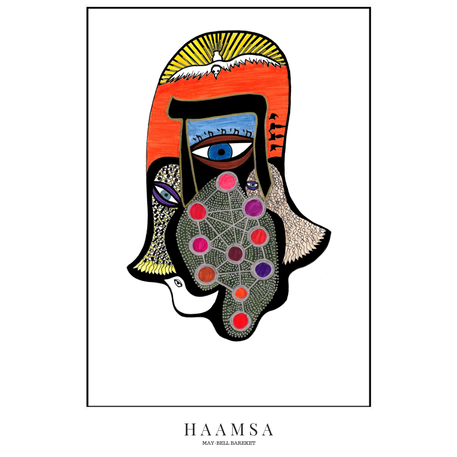
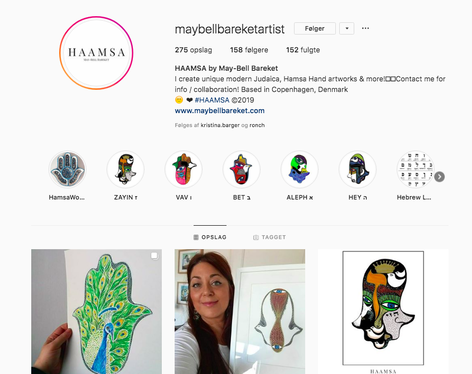
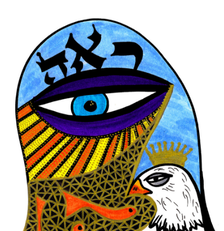
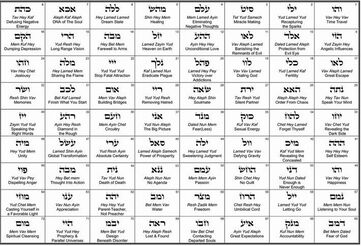
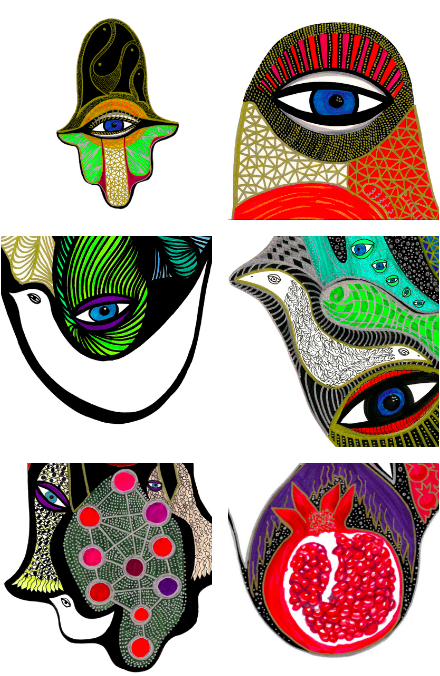
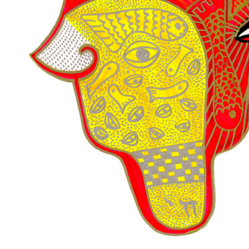
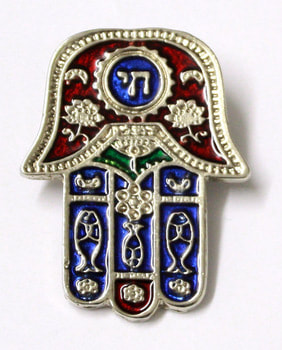
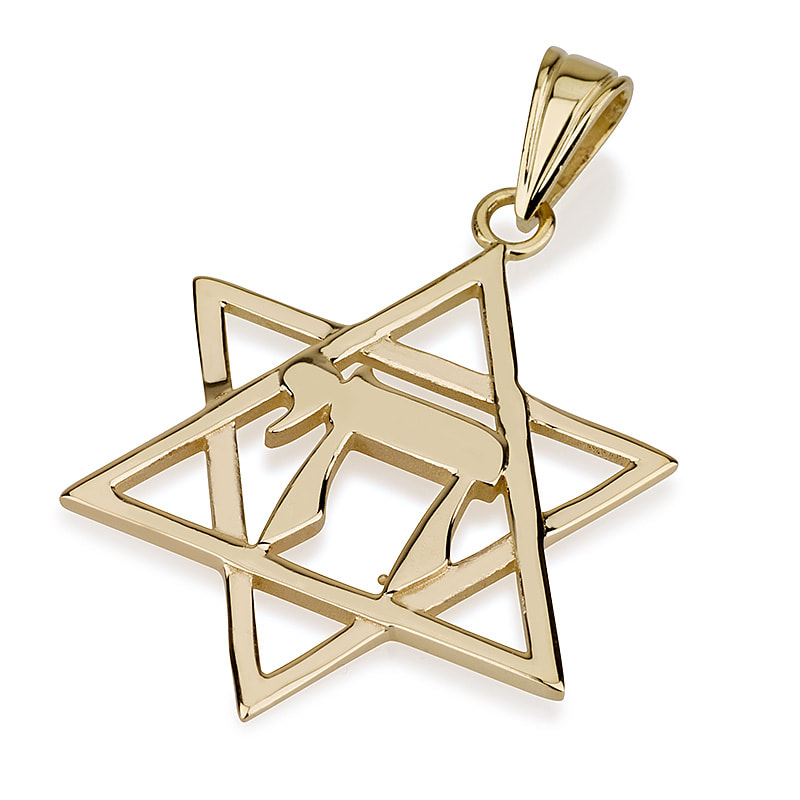
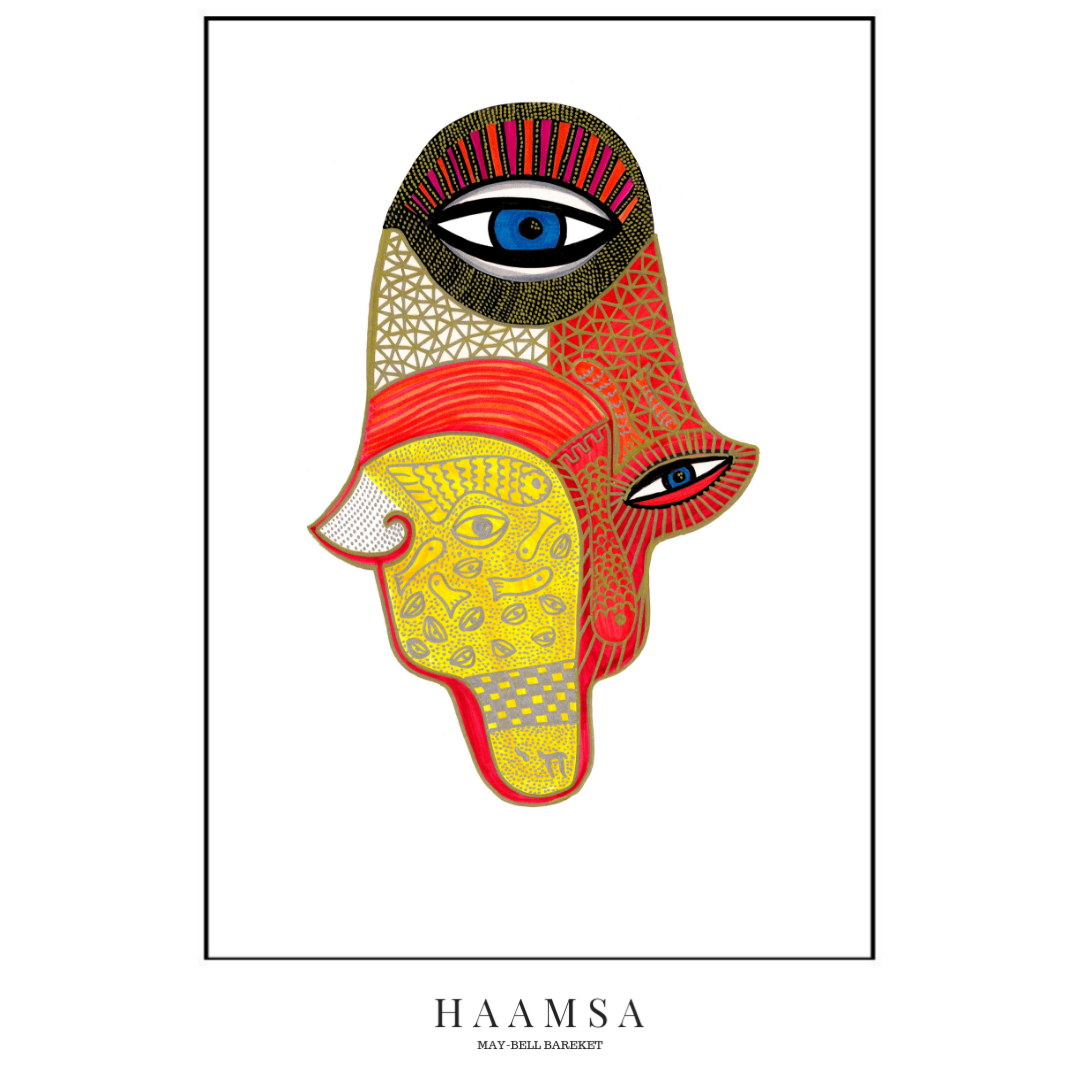
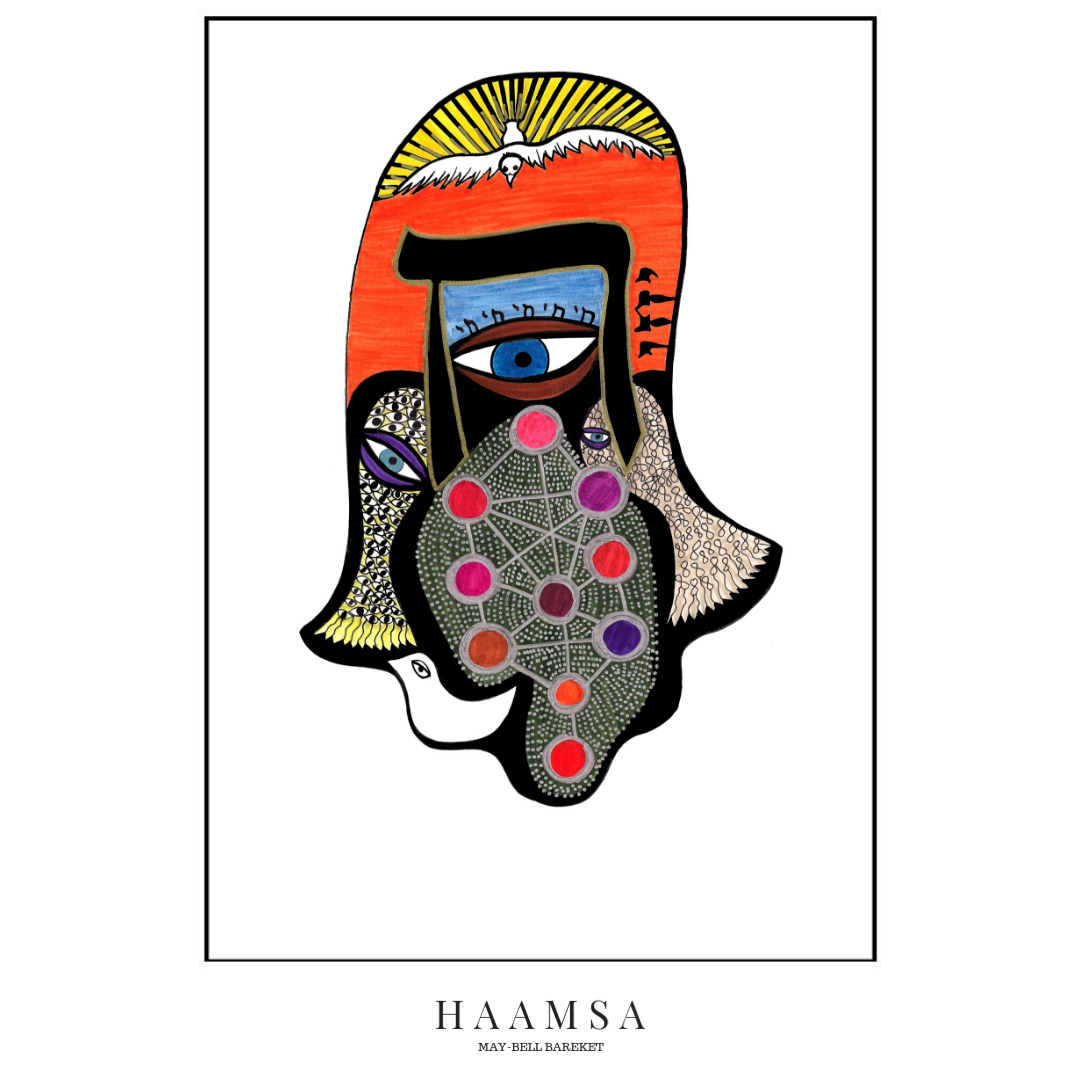


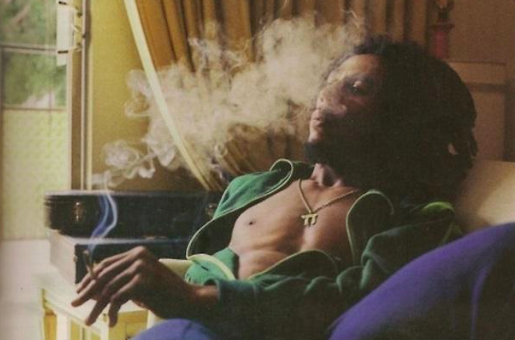

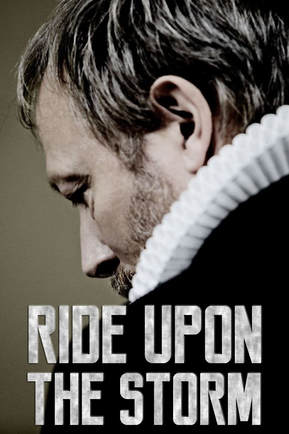
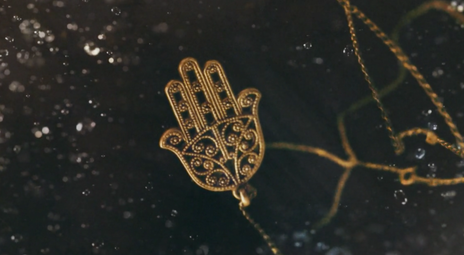

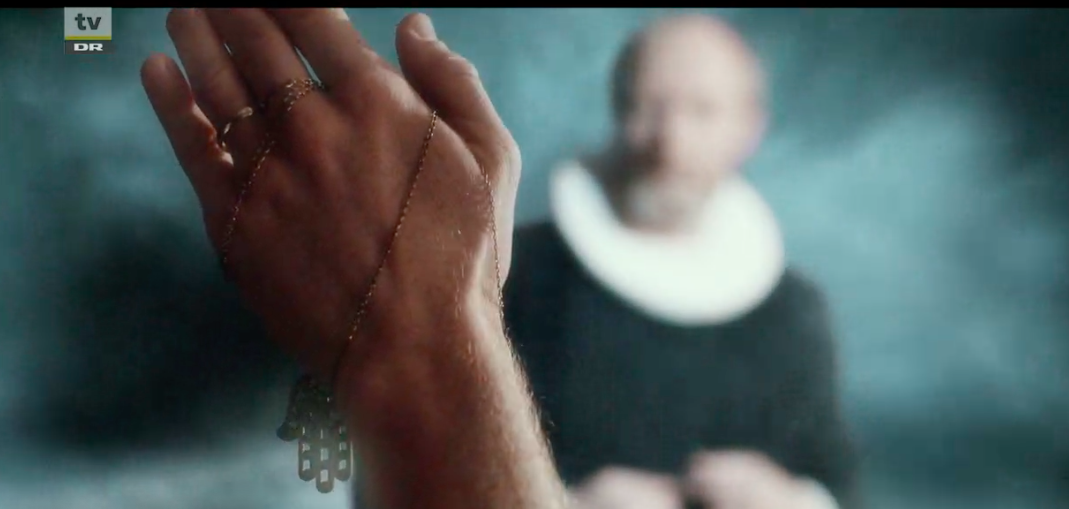
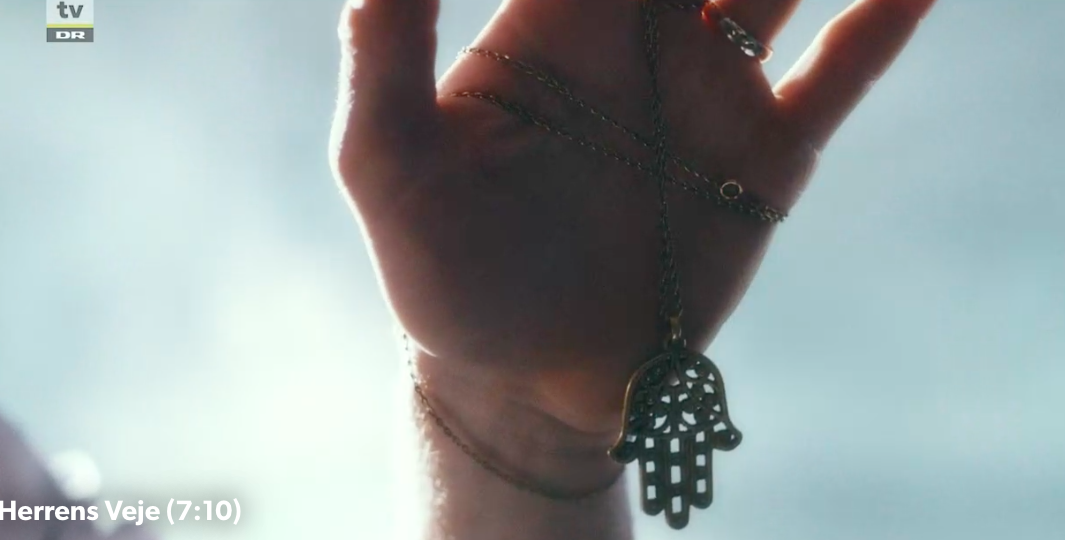

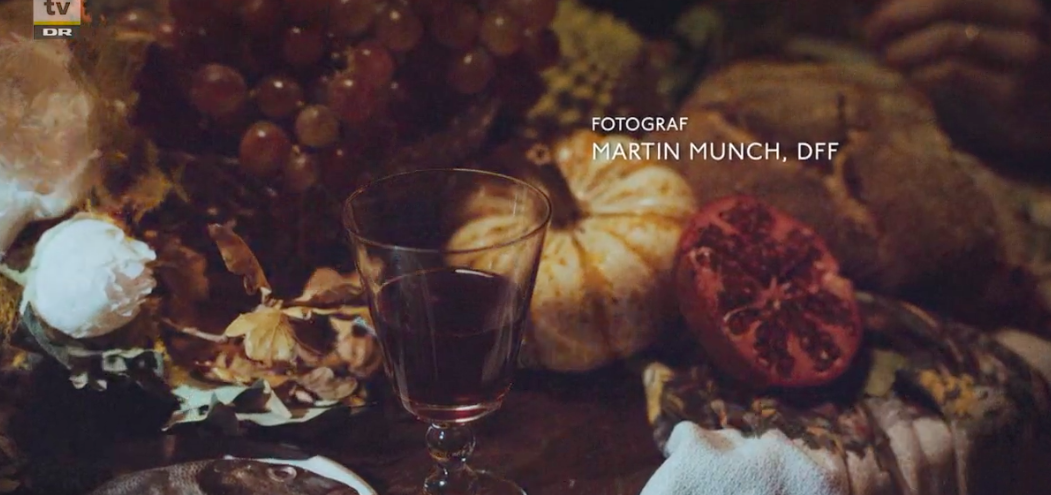
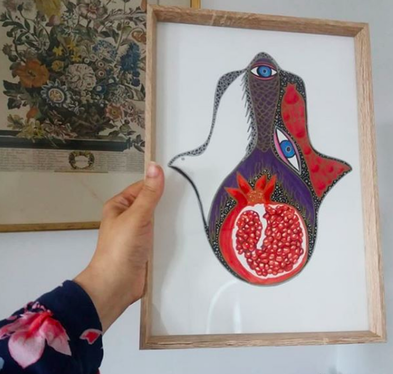
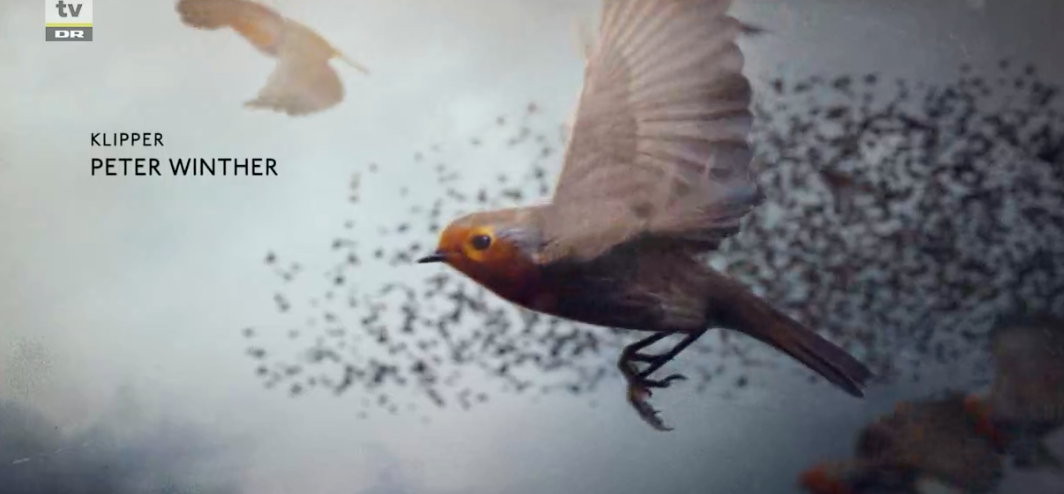
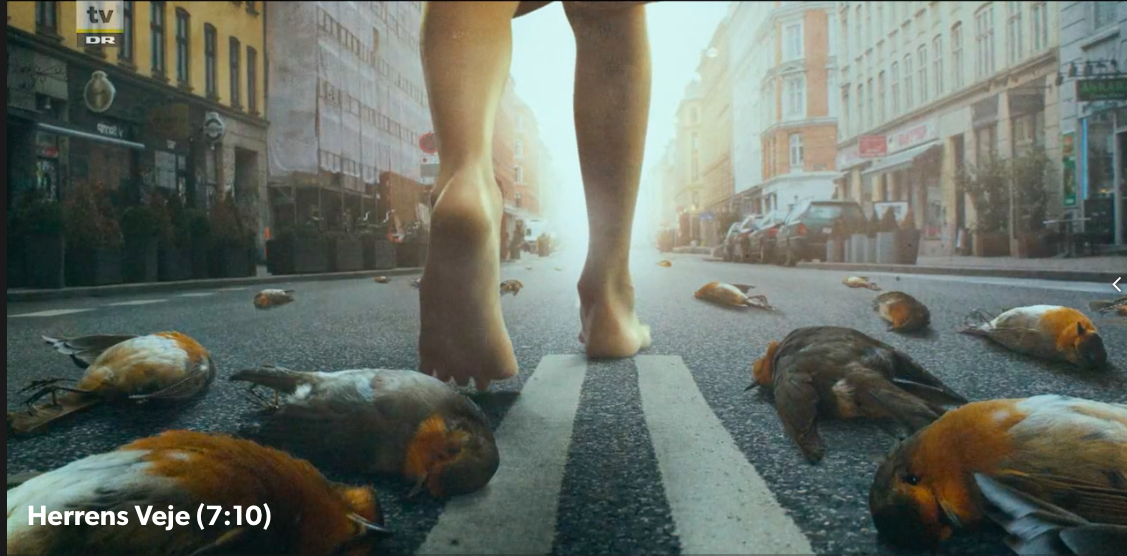

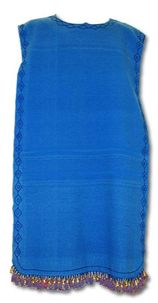
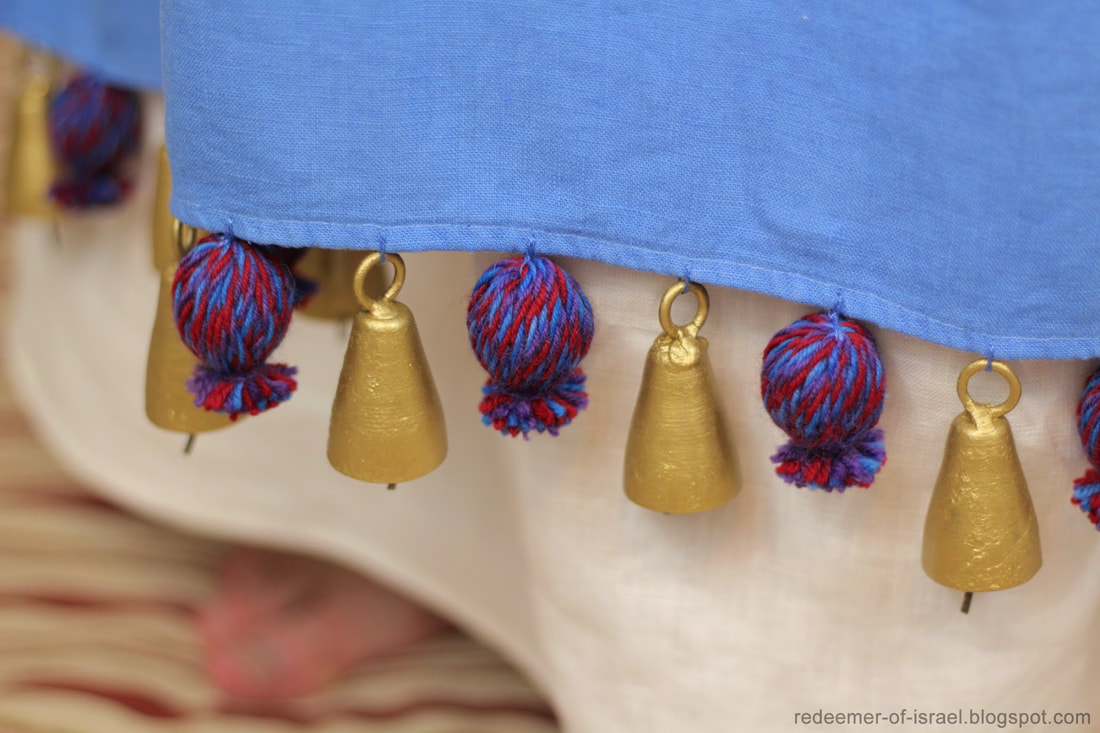
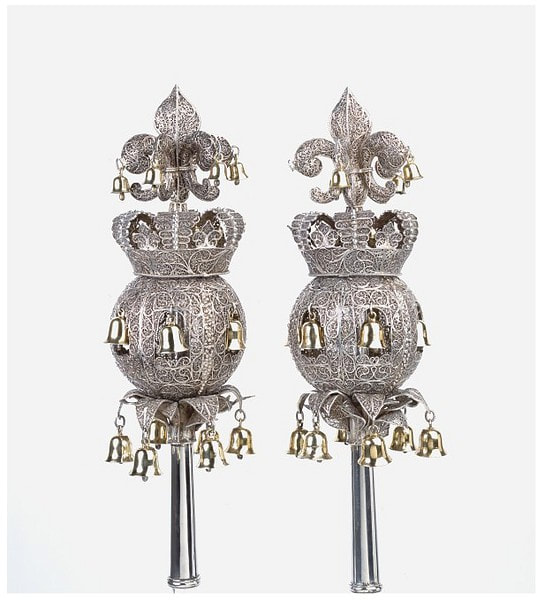
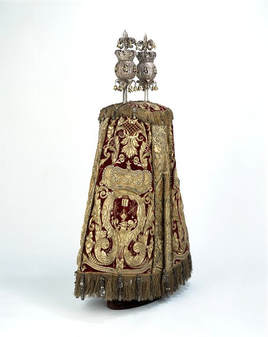
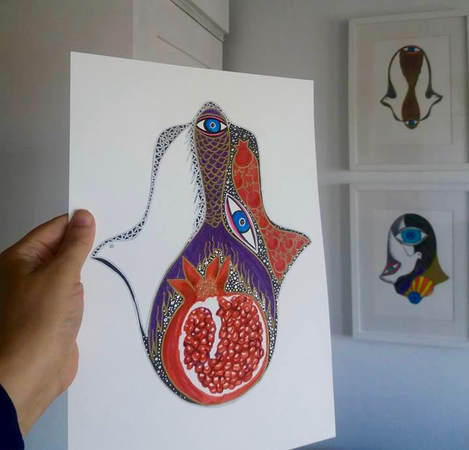
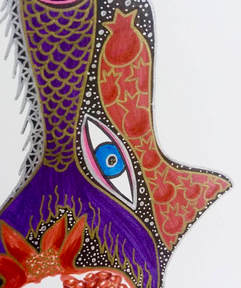
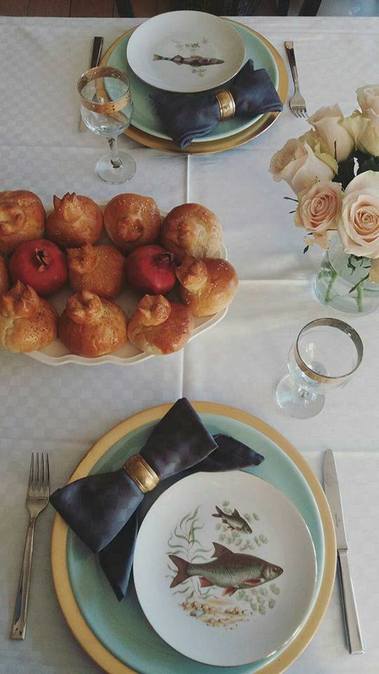
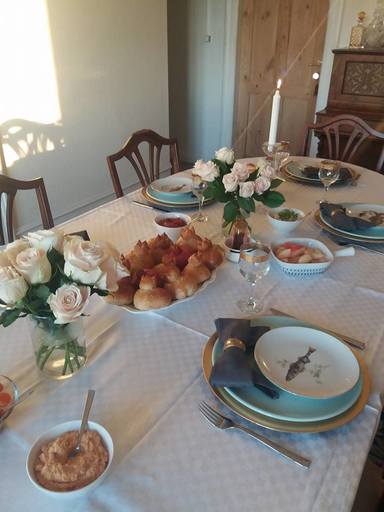
 RSS Feed
RSS Feed
